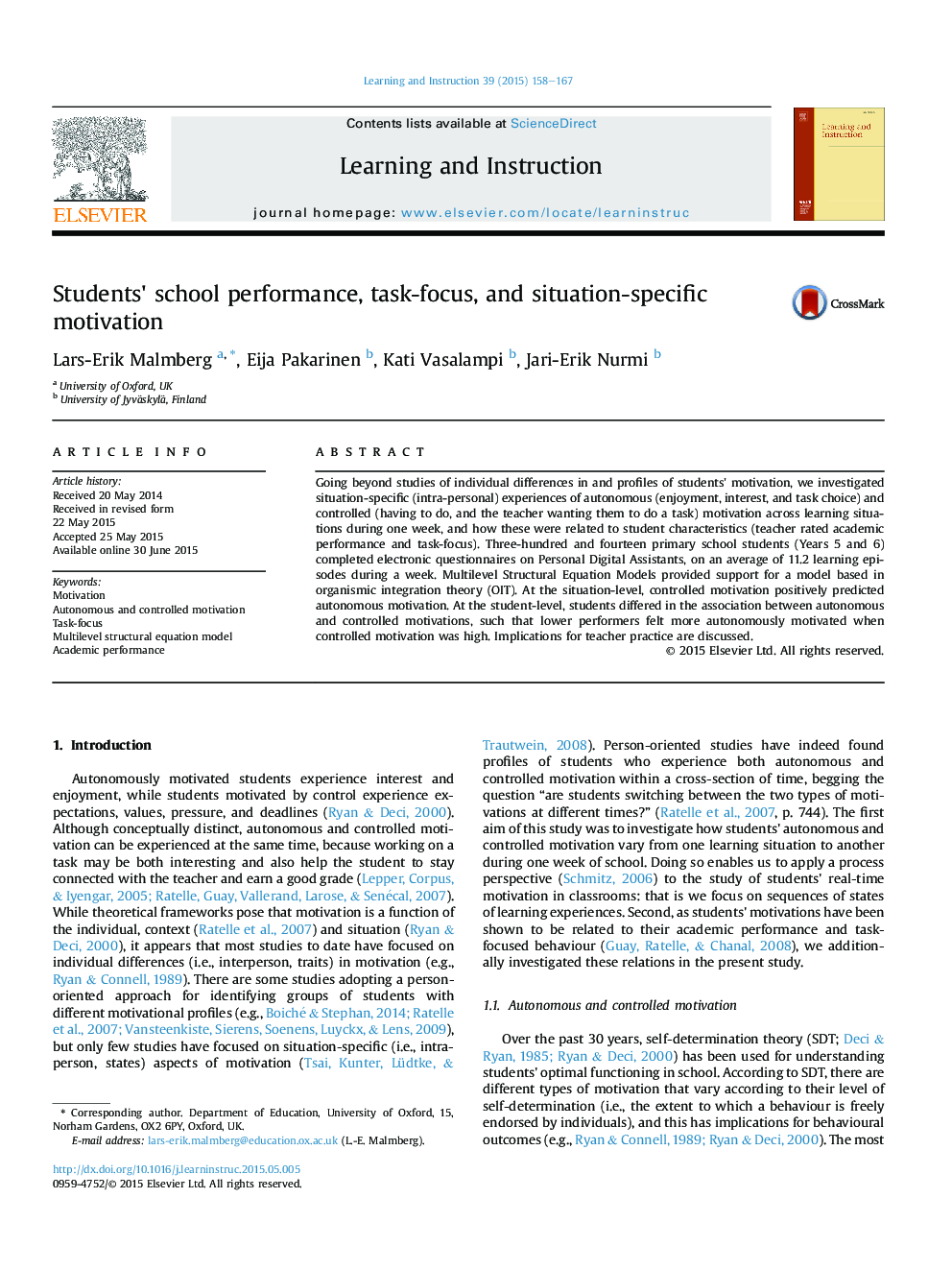| Article ID | Journal | Published Year | Pages | File Type |
|---|---|---|---|---|
| 365511 | Learning and Instruction | 2015 | 10 Pages |
•We investigated situation-specific (intrapersonal) experiences of autonomous and controlled motivation.•Students completed electronic questionnaires during one week of school.•Autonomous and controlled motivation were positively related, but the association varied between students.•Lower performers felt more autonomously motivated when controlled motivation was high.
Going beyond studies of individual differences in and profiles of students' motivation, we investigated situation-specific (intra-personal) experiences of autonomous (enjoyment, interest, and task choice) and controlled (having to do, and the teacher wanting them to do a task) motivation across learning situations during one week, and how these were related to student characteristics (teacher rated academic performance and task-focus). Three-hundred and fourteen primary school students (Years 5 and 6) completed electronic questionnaires on Personal Digital Assistants, on an average of 11.2 learning episodes during a week. Multilevel Structural Equation Models provided support for a model based in organismic integration theory (OIT). At the situation-level, controlled motivation positively predicted autonomous motivation. At the student-level, students differed in the association between autonomous and controlled motivations, such that lower performers felt more autonomously motivated when controlled motivation was high. Implications for teacher practice are discussed.
